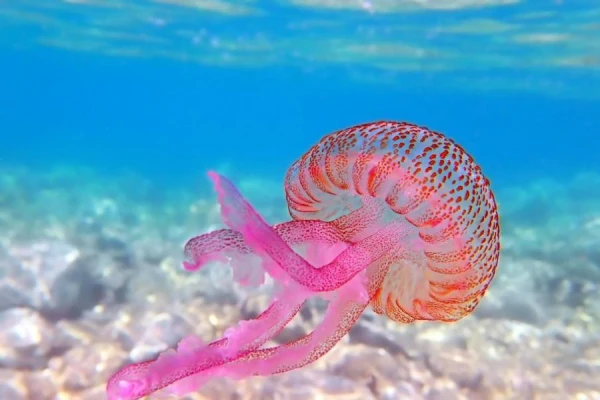
The "absolute limit" of human lifespan at 150 years is just a moment for some animals that can exist for centuries and even millennia. Some organisms are capable of completely halting or reversing the aging process.
For example, giant tortoises can live for over 150 years — the oldest of them, named Jonathan, recently turned 189 years old. However, even these animals do not reach the outliers on our list.
Greenland Whales
Greenland whales (Balaena mysticetus) are the longest-living mammals. The exact lifespan of these Arctic and sub-Arctic whales remains unknown, but stone harpoon tips found in some individuals confirm that they can live over 100 years, with some reaching ages over 200 years, according to the National Oceanic and Atmospheric Administration (NOAA). Whales have been found to have mutations in the ERCC1 gene, which is responsible for repairing damaged DNA, which may contribute to their protection against cancer and age-related diseases.
Aleutian Rockfish
This species of fish is one of the longest-living. The Aleutian rockfish can live for at least 205 years. These pink or brown fish inhabit the Pacific Ocean from California to Japan. They can reach lengths of up to 97 centimeters and feed on other animals such as shrimp and small fish.
Greenland Sharks
Greenland sharks (Somniosus microcephalus) inhabit deep waters in the Arctic and North Atlantic Oceans. According to biologists, they can grow up to 7.3 meters in length and feed on various animals, including fish and marine mammals such as seals. A study of the eye tissue of Greenland sharks conducted in 2016 and published in the journal Science showed that the maximum lifespan of these fish may be at least 272 years. The oldest shark in this study was about 392 years old, and researchers suggested that these animals could live up to 512 years.
Arctica islandica Mollusk
Oceanic mollusks of this species inhabit the northern part of the Atlantic Ocean. They can live even longer than freshwater pearl mussels. One mollusk found off the coast of Iceland in 2006 was 507 years old, according to the National Museum of Wales in the UK. This ancient mollusk was nicknamed Ming, as it was born in 1499, during the Ming dynasty's rule in China (from 1368 to 1644).
Black Corals
Corals look like colorful underwater stones and plants, but they are actually made up of the exoskeletons of invertebrate polyps. These polyps continuously reproduce and replace themselves, creating genetically identical copies that over time increase the structure of the coral exoskeleton. Corals can live for hundreds of years or more, but deep-sea black corals (Leiopathes sp.) are among the longest-living. It has been previously reported that samples of black corals found off the coast of Hawaii were 4265 years old.
Immortal Jellyfish
Turritopsis dohrnii are called immortal jellyfish because they can potentially live forever. These jellyfish start their life as larvae, then settle on the ocean floor and transform into polyps. These polyps subsequently produce free-swimming jellyfish. According to the American Museum of Natural History, mature Turritopsis dohrnii are unique in that they can revert back to polyps if they are physically damaged or experience starvation, and then return to their jellyfish state.
Jellyfish originating from the Mediterranean Sea can repeatedly undergo this life cycle change and, therefore, never die of old age under favorable conditions, according to the Natural History Museum in London. Turritopsis dohrnii are very small — less than 4.5 millimeters in diameter — and often fall prey to other animals such as fish. Thus, while this organism is physically immortal, in practice, its death may be caused by factors unrelated to age.











